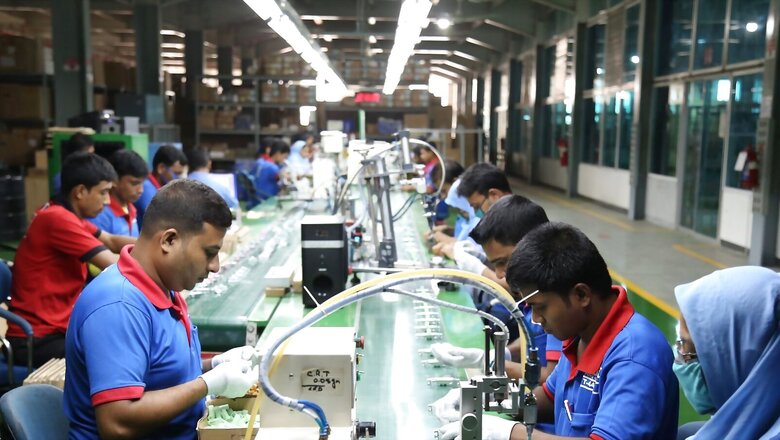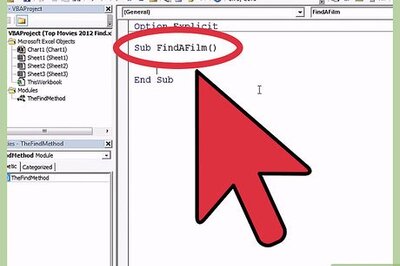
views
New Delhi: India’s manufacturing sector activity hit the highest level in eight months in July, driven by a significant rise in business orders, a monthly survey said on Monday. The seasonally adjusted S&P Global India Manufacturing Purchasing Managers’ Index rose from 53.9 in June to 56.4 in July, reflecting the strongest improvement in the health of the sector in eight months.
The July PMI data pointed to an improvement in overall operating conditions for the 13th straight month. In PMI parlance, a print above 50 means expansion while a score below 50 denotes contraction. “The Indian manufacturing industry recorded a welcome combination of faster economic growth and softening inflation during July,” Pollyanna De Lima, Economics Associate Director at S&P Global Market Intelligence, said.
Further, Lima said that output expanded at the fastest pace since last November, a trend that was matched by the more forward-looking indicator of new orders. “Although the upturn in demand gained strength, there were clear signs that capacity pressures remained mild as backlogs rose only marginally and job creation remained subdued,” Lima added.
The aggregate new order intakes rose substantially in July, recovering the growth momentum lost in June. The readings are based on a monthly survey of businesses that are mainly into manufacturing activities.
“The latest increase was in fact the most pronounced since last November, with quicker expansions recorded in all three broad areas of the manufacturing industry,” as per the survey. Despite the solid performance of the manufacturing industry, overall job creation remained subdued. A vast majority of firms (98 per cent) opted to leave workforce numbers unchanged amid a lack of pressure on operating capacity, it added.
Another factor that constrained hiring activity was future uncertainty. According to the survey, despite improving from June’s 27-month low, the overall level of business sentiment was muted in the context of historical data. In fact, 96 per cent of manufacturers forecast no change in output from present levels over the course of the coming 12 months.
It also noted that while companies stepped up input purchasing, job creation remained marginal amid an uncertain outlook and a general lack of pressure on operating capacities. “With incidence of shortages diminishing, the rate of input cost inflation eased to an 11-month low in July, subsequently dragging down the rate of increase in output prices to the weakest in four months,” Lima said.
As per official daa, the retail inflation based on Consumer Price Index (CPI), which the Reserve Bank of India (RBI) factors in while arriving at its monetary policy, has been above 6 per cent since January 2022. It was at 7.01 per cent in June. Experts believe the RBI may go in for its third consecutive policy rate hike by at least 35 basis points to check high retail inflation.
The RBI’s rate-setting panel — the Monetary Policy Committee — will meet for three days from August 3 to deliberate on the prevailing economic situation and announce its bi-monthly review on Friday.
.
Read all the Latest News and Breaking News here




















Comments
0 comment